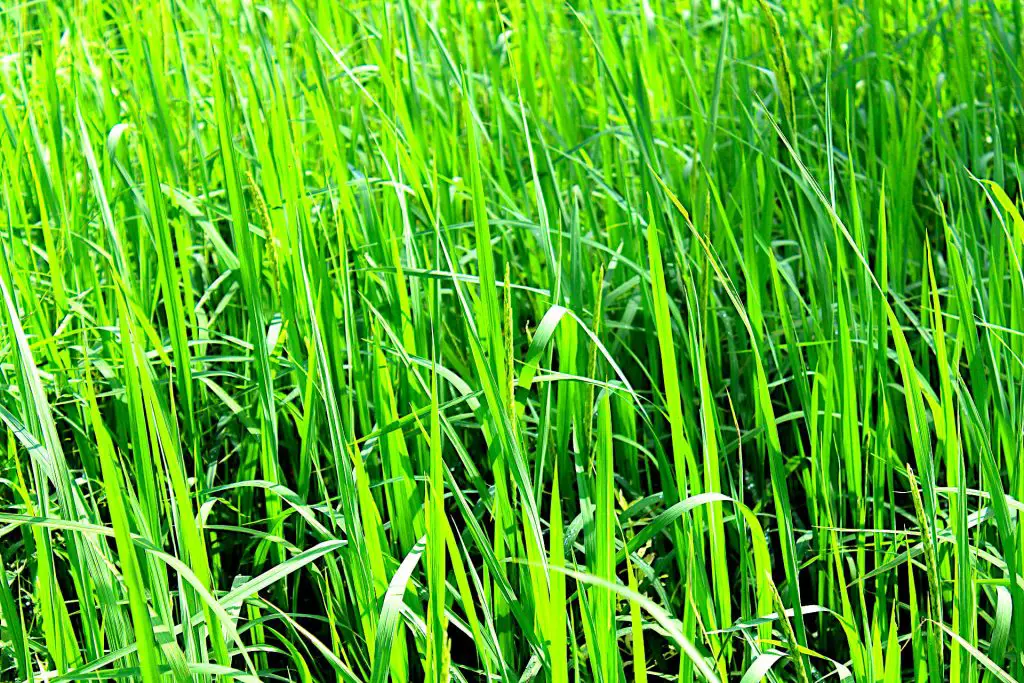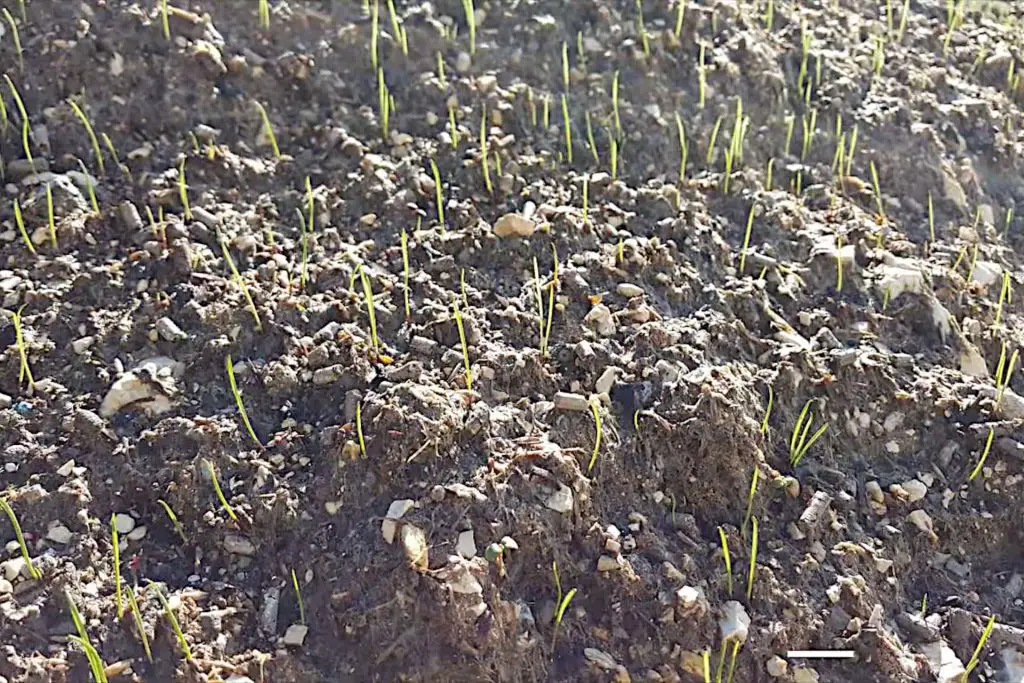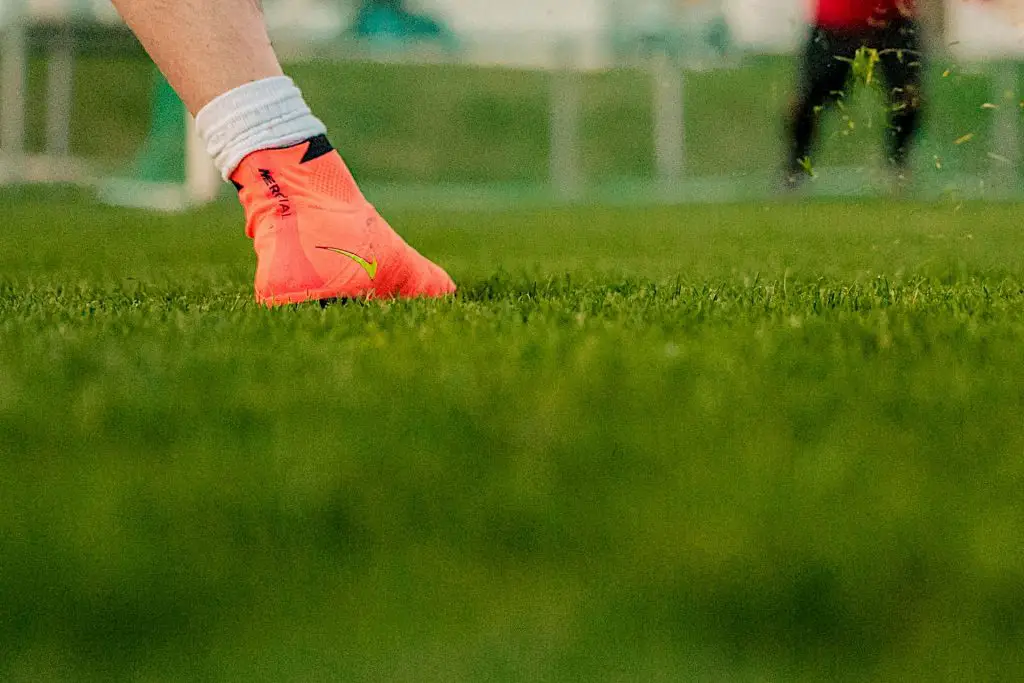How Long Does It Take for A Hydroseeded Lawn to Grow | When Can You Use a Lawn After Hydroseeding?
There are various different factors that can influence the time it takes for a hydroseed lawn to grow, which means timeframes can be subjective . These factors include the type of grass seed, prevailing weather conditions and the time of year, along with a number of other variables such as proper aftercare.
If you are just looking for a general answer from which you can base calculations, then, with hydroseeding, you should see grass growth in around five and seven days, be able to lightly use the lawn after around a month, and have general use of the lawn from the around the three-month mark.
All these times though, are a rough average and are subject to the controlling elements just mentioned. Below, we will look at the main variables that influence grass growth and discuss some of the ways in which you can speed up the process .
What Are the Factors that Influence the Grass Seeds Speed of Growth?

It is true that, on average, you should see grass growth between five and seven days but this can be faster or slower depending on several variables. For example, if you hydroseed at certain times of the year and you use longer germinating seed varieties, such as Kentucky bluegrass then, you might be looking at a timeframe of around twenty-one to twenty-eight days before you see substantial growth.
There are many influencing factors but the most important ones are:
- Ground preparation
- Grass seed selection
- Pre-germination
- Time of year
- Topography of the land to be hydroseeded
- Climate
- Prevailing weather conditions
Obviously, there are considerations such as prevailing weather conditions and land topography that you have no or little control over, but the other factors can be influenced to allow you to establish a lawn in the fastest possible time.
When Is the Best Time to Hydroseed My Lawn?
Probably the first factor to consider is what time of year you are going to hydroseed. You can, in theory, hydroseed at any time of the year, but hydroseeding at certain times of the year might result in a variety of problems. Extremes of temperatures, either cold or hot, can delay or even cause your seeds to fail to germinate.
In temperate climates, hydroseeding is best done in the spring or late summer early fall (autumn). Spring is a good time because the temperatures have usually not risen too much. It is similar with early fall. At this point of the year the temperatures are decreasing. Both periods usually enjoy higher rainfall than high summer and are thus generally better in terms of grass growth.
You can still hydroseed in high summer but you may well need a more absorbent mulch, such as wood fiber mulch, to help with water retention and you would probably have to increase the post hydroseeding watering schedule.
In temperate climates, you wouldn’t want to leave hydroseeding too late into the fall season. You need at least four to five weeks of growing time before the temperature drops below around 50 F. If the ground temperature drops below this then the seeds will lie dormant and the grass will stop growing until the temperature increases again in spring.
Grass Seed Selection
There are many different factors that go into deciding the grass seed mix for your hydroseeding project. Unfortunately, it isn’t always down to just choosing the fastest growing grass variety as the choice may not be conducive to prevailing climate conditions. Warm-season grasses don’t grow well in cool conditions and cool-season grasses struggle in hotter climates.
If you are looking at it in terms of speed you need to bear in mind climatic conditions, as well as possible topographical site issues, such as an abundance of shade, when choosing your seed. Certain varieties of grass seeds perform better under specific environmental circumstances, and at different seasons of the year than others.
Seed types can be utilized in monoculture (a single variety) or in combination (mixed) with other seed types to provide the best solution, not just in terms of speed of growth, but also with regard to maintenance. You also have to take into account temperature tolerance and drought resistance and if they are likely to be factors in your location. However it should be noted that speed over long term viability is not a good trade-off.
Why Does Hydroseeding Appear to Have Superior Germination Results?

One of the advantages of hydroseeding over dry seeding is that the process promotes faster seed germination helping seeds take root and establish themselves more quickly. The most important factors that dictate the speed of growth are water, heat, light and nutrition.
The hydroseeding process dramatically helps germination in several ways giving the best opportunity to thrive and grow quickly. The mixing process kicks start the seed germination. This is because the hydroseeding mix not only includes the seed but water, mulch and soil amendments in the form of fertilizers and tackifiers.
The grass seed in the mix absorbs water up to ten times its weight during the mixing process and when the slurry is put down the seed will continue to draw water from the mulch giving it an advantage over dry seeding.
Pre-Germinated Grass Seed
If speed is really important then using pre-germinated seed will help the grassroots establish more quickly with good growth being seen in around seventy-two hours.
Irrespective of which grass seed type you are going to use, pre-germinating before use can make a big difference to the rate of growth. This is due to the fact that many grass seed varieties are mixed, and this even more so with hydroseeding, as you mixing varieties is common.
Some of these varieties grow more slowly than others and by pre-germinating the seeds you can even up the process, plus ensure that when the slurry is put down the seed will look to immediately root.
What Is the Germination Time on Hydroseeding Compared to Dry Seed
Because of the nature of the process, hydroseeding should provide a slightly faster germination time over dry seeding. It is not impossible to see good germination rates in around seventy-two hours whereas with dry seeding you are likely to have to wait around seven days to see similar germination rates.
When Can You Use a Lawn After Hydroseeding?
It can be incredibly frustrating to have to wait to properly use your lawn after hydroseeding. It is though, important that you stay off the lawn until the roots have firmly established themselves to the point where they can handle the traffic.
There are a number of reasons for this, the main ones being the prospect of damaging the seed and the germination process. The seeds should be planted at about 1/2 inch deep into the mulch and soil. If, however, they get stepped on the seed may be pressed deeper into the soil. If the seeds get pushed down to more than an inch below the surface they probably won’t get the proper amount of sun, water, and nutrients they need.
If this happens the grass comes up but it dies as a consequence of not getting the proper conditions to allow it to properly thrive. The result could be bare patches forming in the lawn where the seeds have failed to germinate properly.
At What Point Can a Hydroseeded Lawn Handle Traffic?

This leads to the question at what point can you properly use your lawn after hydroseeding? There is no hard and fast timeframe and, to a certain extent, it is judgement based. A lot will depend on how fast and well the grass has grown. As we have already considered this will be affected by amongst other factors, the weather conditions and the type of grass seed used. In general, as a guide, you would want to see the grass around one to two inches in length before light use.
Assuming that the weather has been kind then, in general, the lawn should be well enough established to be able to be walked upon and lightly used after three to four weeks. If you want to throw a party or play games you are still going to have to wait. It is likely to be ten to twelve weeks before the lawn is strong enough to take heavy footfall.
In practice, when planning any particularly heavy use, although you will have a reasonably fully functional lawn after around three months, it may take up to a year for the lawn to become fully established and completely settled.
Summary: How Long Does Hydroseeding Take to Grow?
The question of how long it takes for hydroseeded grass to grow or when you can use a lawn that has been hydroseeded is usually predicated on the need for speed. The truth of the matter is hydroseeding doesn’t give you an instant lawn. If you need a lawn right away then you will have to use sod.
Hydroseeding’s strengths lie in the areas such as flexibility, adaptability and cost. This doesn’t mean that the process is slow. It is in fact quicker than dry seeding in terms of germination and establishment, as well as providing a better finish.
The reality is that it is very difficult to put an exact timeframe on germination, and the points at which the lawn will accept light use to the time it will be able to take heavy traffic. There are too many variables in play from climate, and weather conditions to grass seed to name but three. However, when you take the principle factors into account you should be able to put a realistic forecast on how long each stage should take before you begin.
